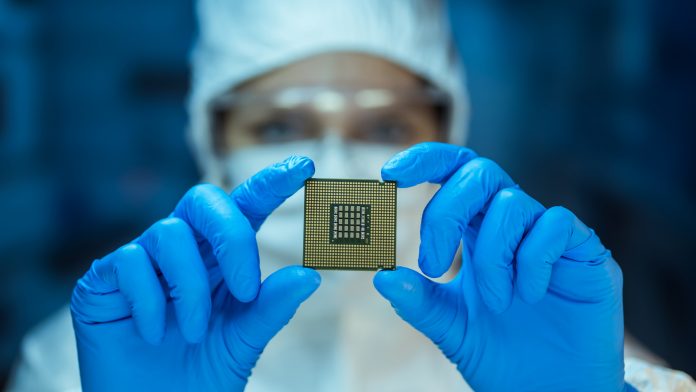A substantial $54m in funding has been awarded by the US Department of Energy (DOE) to advance the next generation of microelectronics, an endeavour that will revolutionise the future of computing.
The investment will be employed to finance ten novel projects led by DOE’s national laboratories, with the objective of them being used to enhance the technology of microelectronics, improving their energy efficiency, design, and production.
Two of the projects selected for funding will be conducted at the Department of Energy’s Argonne National Laboratory and will be led by the scientists Supratik Guha and Valerie Taylor.
What are microelectronics?
Microelectronics – tiny electronic components – are a vital element of the world we know today, present in a plethora of technologies used all over the globe, such as smartphones, tablets, and computers. Over the last decade, microelectronics have evolved dramatically, achieving exceptional advances in performance through increased miniaturisation. However, the technology is now approaching a bottleneck, meaning that new, innovative methods are required to supply the growing demands of our information-driven society.
Jennifer M. Granholm, the US Secretary of Energy, said: “Thanks to microelectronics, technologies that used to swallow entire buildings now fit in the palms of our hands — and now they are supporting climate solutions in electricity, transportation and renewable energy.
“DOE’s world-class scientists are stepping up to reduce the carbon footprint of microtechnologies used by billions of people around the world to secure our clean energy future, increase American competitiveness, and lead on climate action and innovation.”
What projects will be funded?
The project led by Guha will aim to understand and develop new approaches for memory and future computing and is titled “Ultra-dense, near-perfect, atomic and synaptic memory”. Unlimited, fast memory and more efficient memory-centric computing will be vital for meeting future computing needs, with memory technology being the most considerable bottleneck for extreme-scale computing platforms.
Conventional microelectronics bend but do not resolve the memory bottleneck issue, with the materials, devices, and architectures that will resolve these issues not existing yet and will need to be designed around the scientific understanding of mechanisms at the electronic, atomic, and system level. The project may potentially lead to improved energy-efficient computing, which will increase the performance of an array of computing applications used worldwide.
Guha, the senior advisor to Argonne’s Physical Sciences and Engineering directorate and a professor at the University of Chicago’s Pritzker School of Molecular Engineering, said: “Our planned research is of a basic scientific nature and aimed towards understanding and creating new approaches for digital and analogue memory for future computing.”
The overarching goal of Guha’s team is to implement the discovery science required for highly efficient memory for future technology, making it denser, more energy-efficient, and powerful.
The Taylor-led project is focused on materials and computer architecture and is called “Threadwork: a transformative co-design approach to materials and computer architecture research”. The project will involve a multidisciplinary collaboration that examines interdependencies among materials, physics, architectures, and software.
The Threadwork project will strive to advance the process in which scientists conduct microelectronics research, with a vital aspect of Threadwork being a simulation framework that explores the relationships between materials and applications. This co-design is crucial in determining the most optimal avenues for research into the materials and devices that impact microelectronics and detectors for high-energy and nuclear physics.
Taylor, the director of Argonne’s Mathematics and Computer Science Division, commented: “I am very excited about the opportunities presented by the Threadwork co-design approach to connect applications with materials research and accelerate progress in multiple science domains.”
All of the projects selected for funding were chosen based on peer review, with the two Argonne projects awarded a combined $10.5m, which will be financed over three years.









